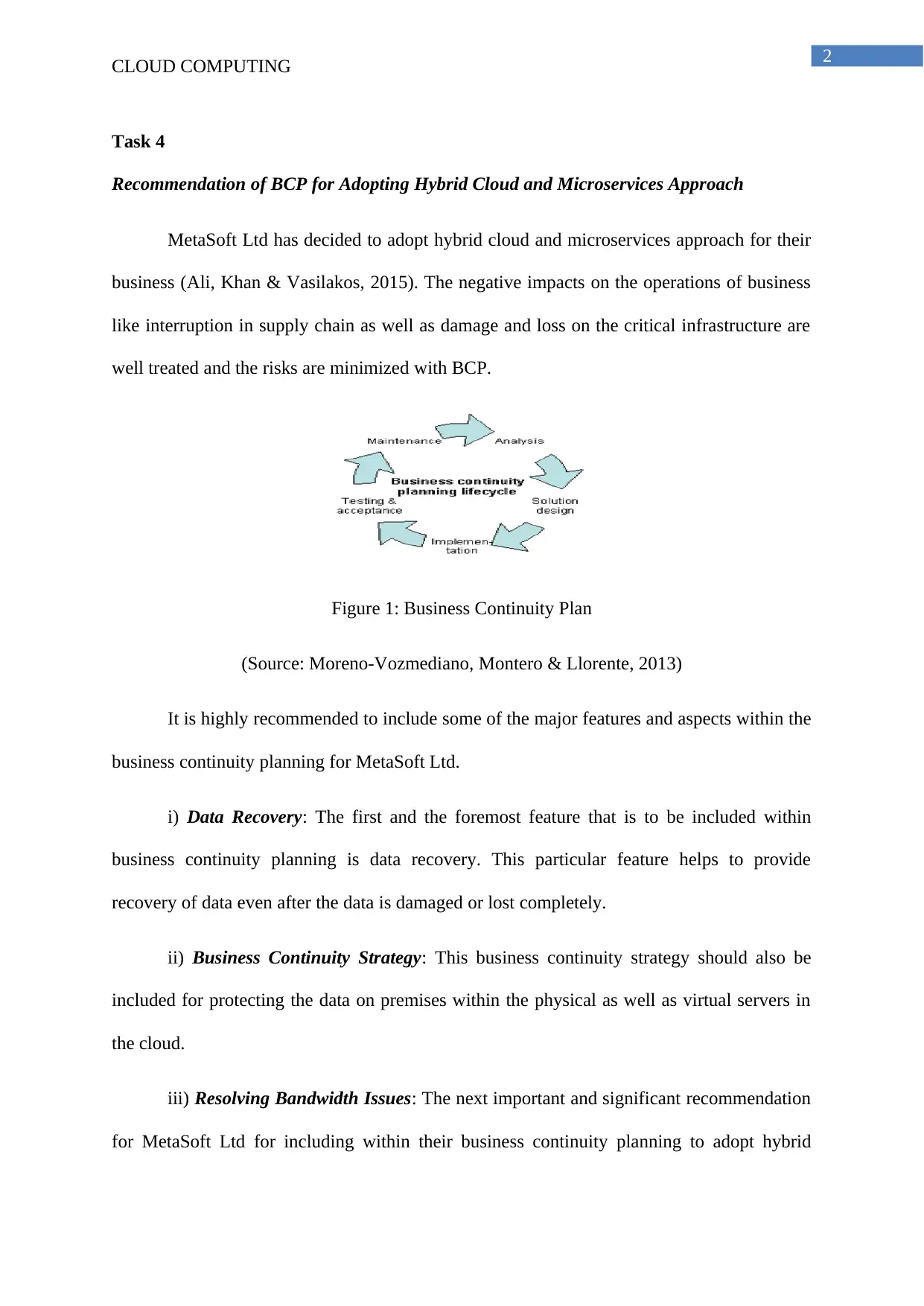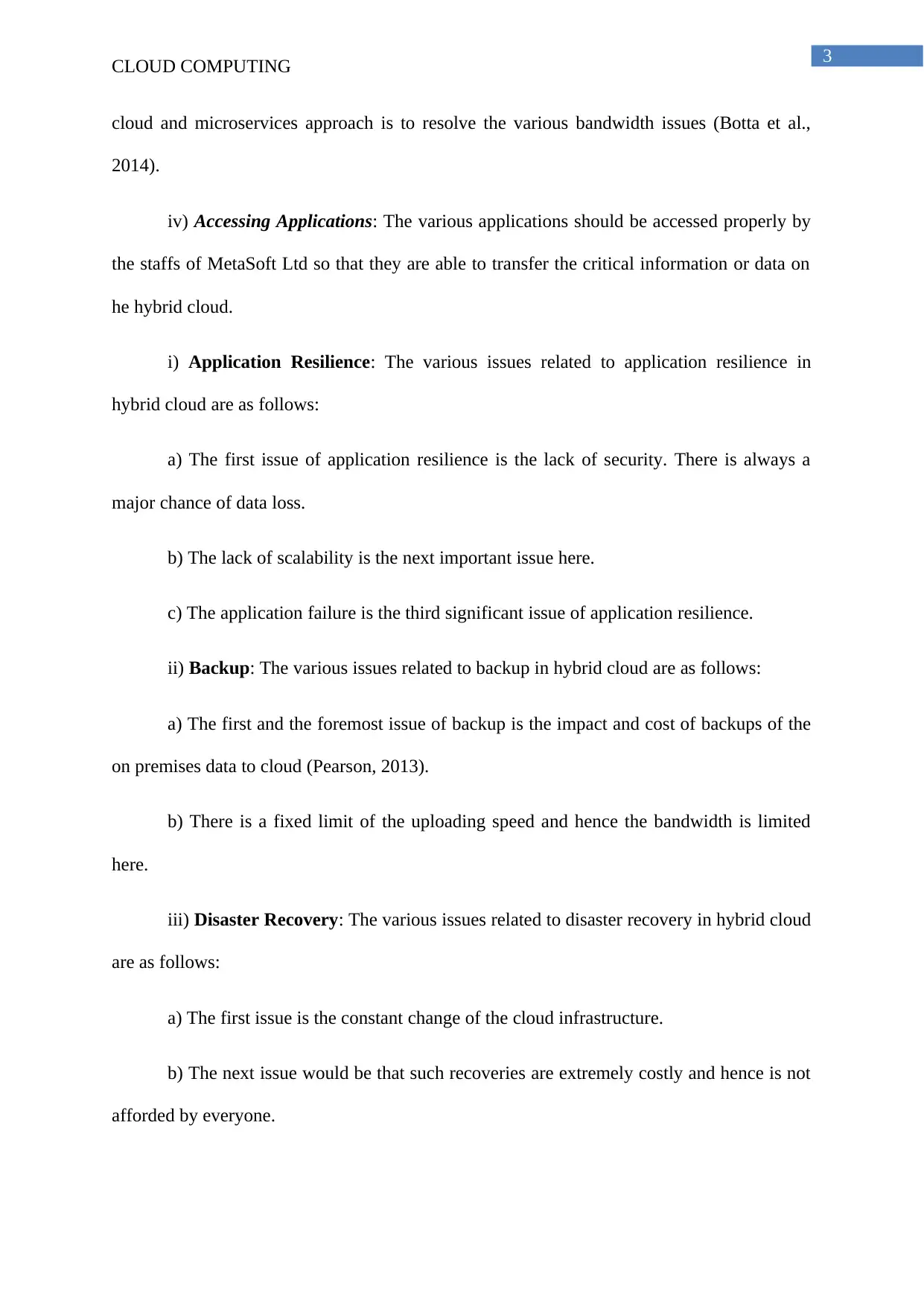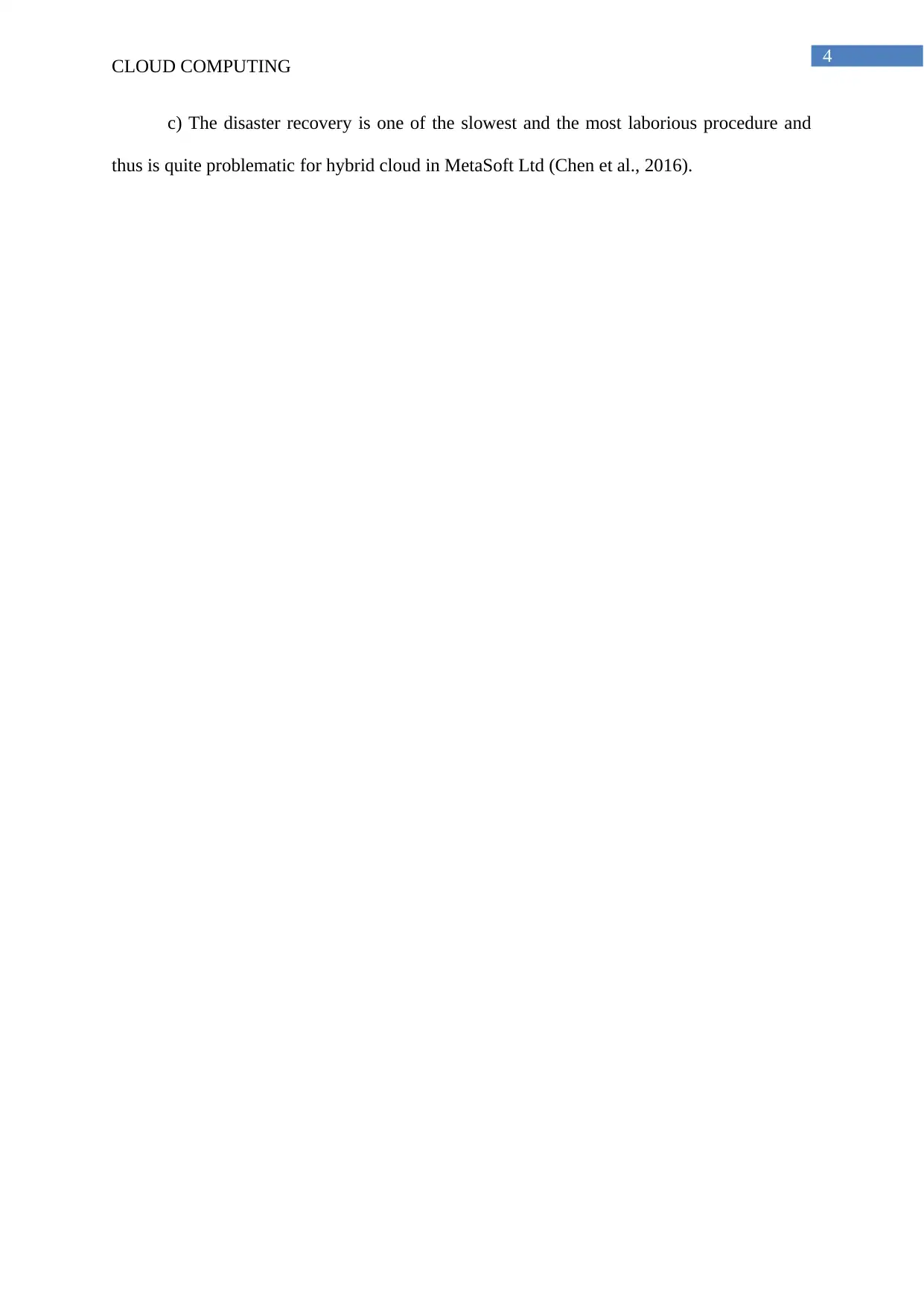BCP for Adopting Hybrid Cloud and Microservices Approach
VerifiedAdded on 2023/06/04
|8
|1319
|395
AI Summary
This article discusses the Business Continuity Plan for MetaSoft Ltd to adopt hybrid cloud and microservices approach. It also explores the requirements for conducting remote server administration and SLA management. The article highlights the major features and aspects of Business Continuity Planning, including data recovery, business continuity strategy, resolving bandwidth issues, accessing applications, application resilience, backup, and disaster recovery. The article also discusses the requirements for conducting remote server administration and SLA management, including identifying business requirements, establishing the scope of services, developing a service catalogue, conducting gap analysis, determining service expenses, and measuring total performance.
Contribute Materials
Your contribution can guide someone’s learning journey. Share your
documents today.
1 out of 8














![[object Object]](/_next/static/media/star-bottom.7253800d.svg)